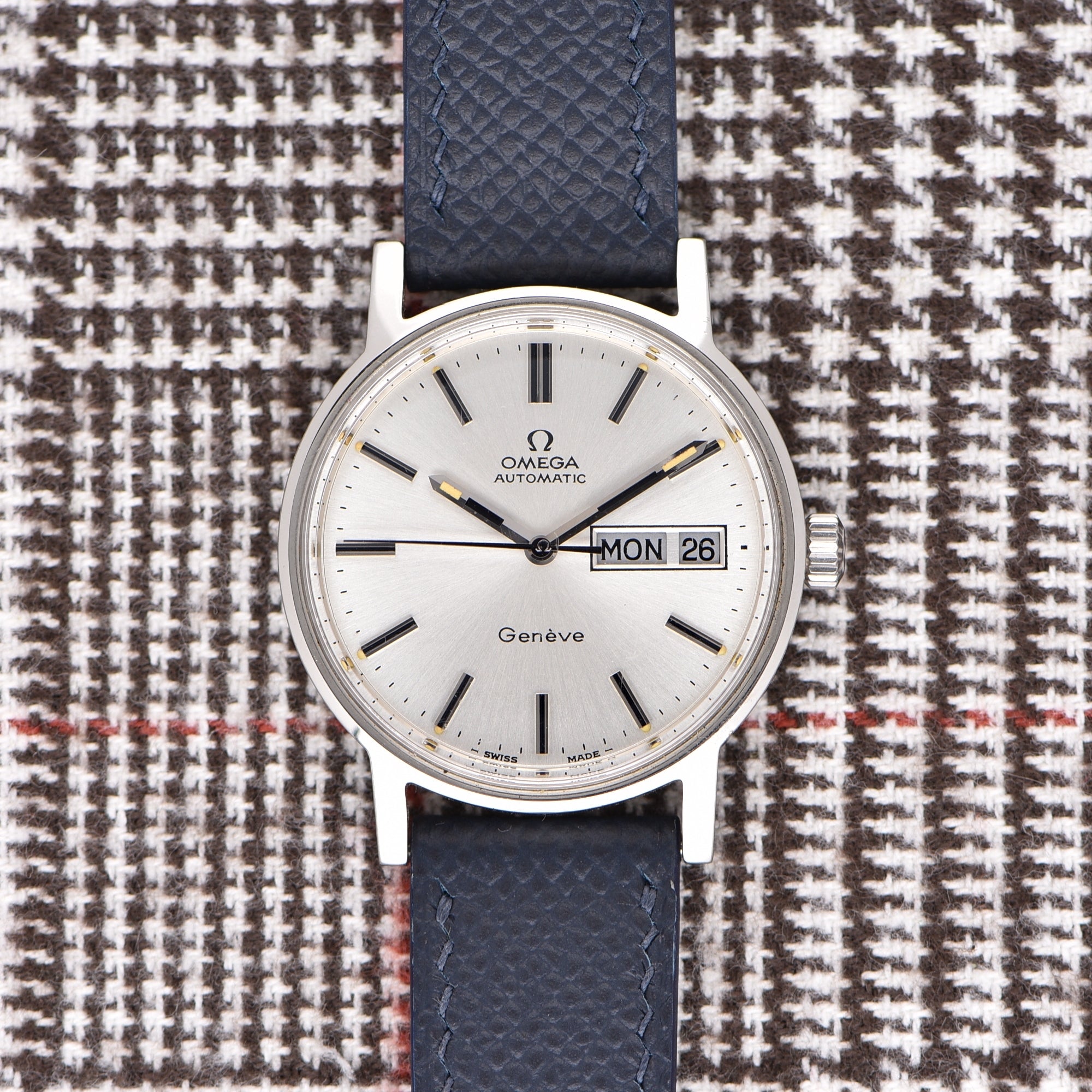
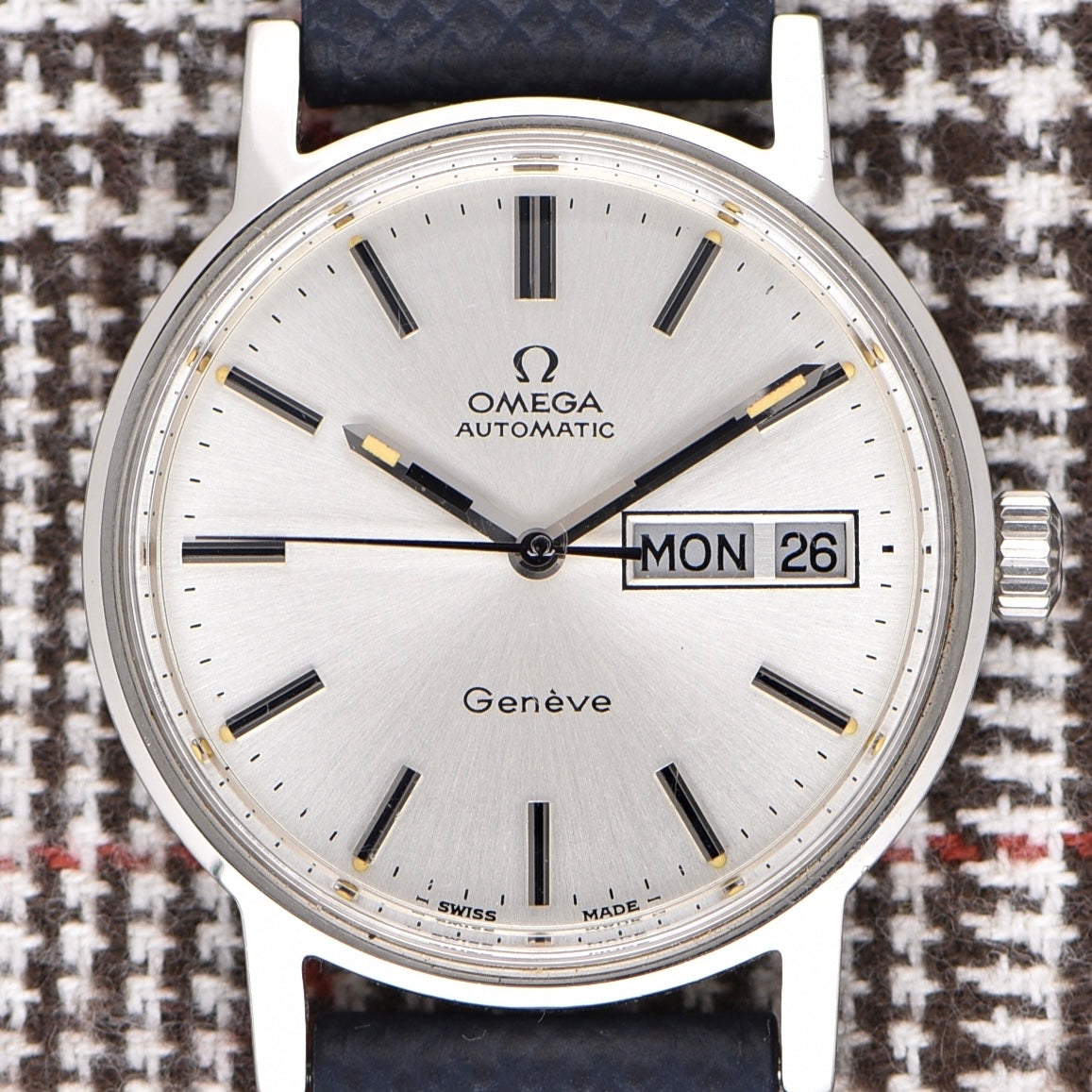

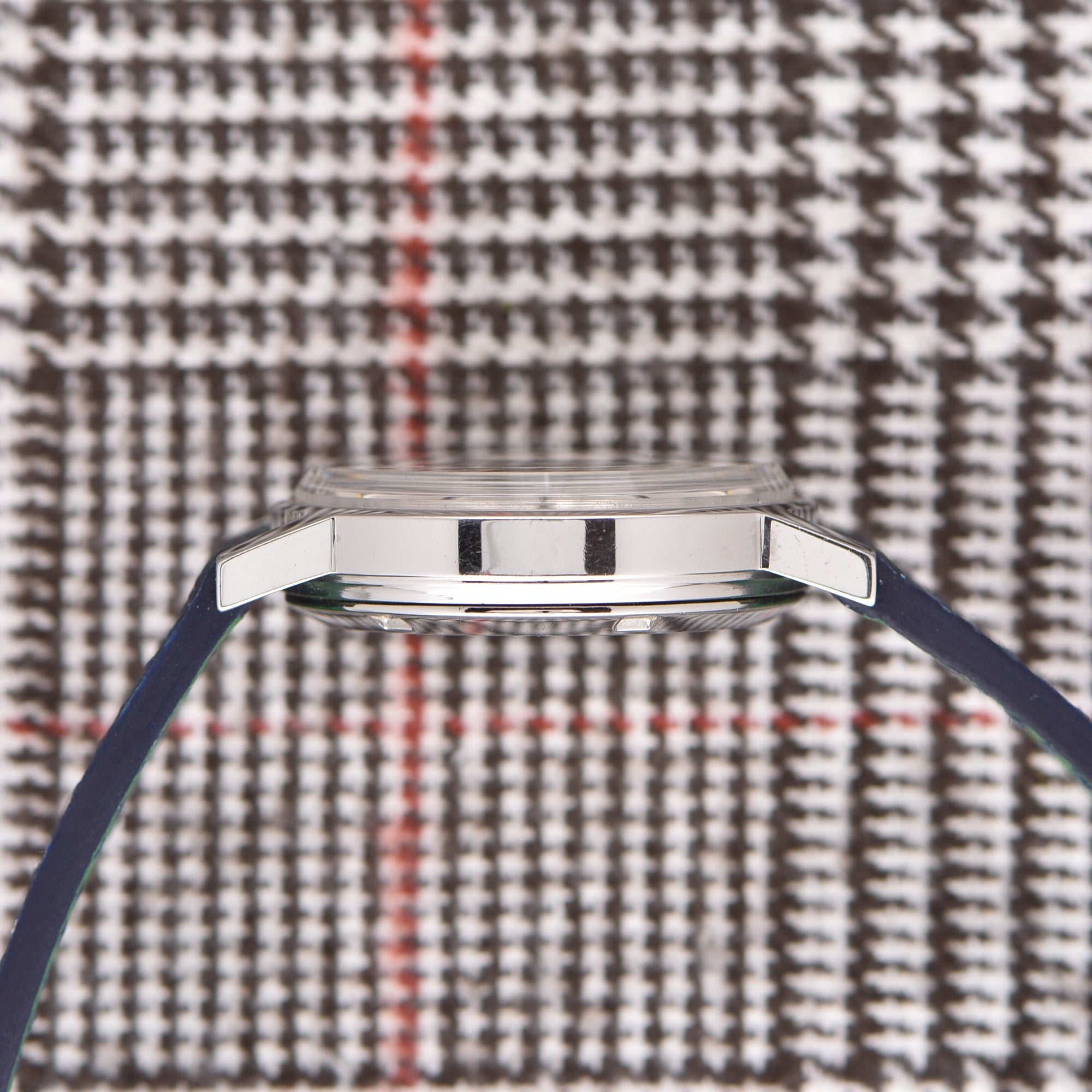

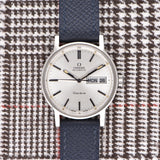
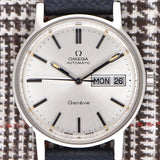
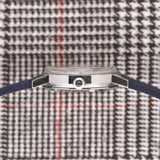
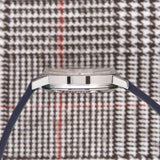
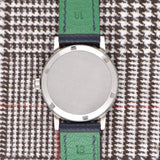
1972 Omega Geneve Day-Date
- 166.0117
- Watch Only
- Specifications
- The Story
- The Brand
Year: 1972
Model: Geneve
Case Diameter: 34mm
Lug to Lug: 40mm
Case: Stainless Steel
Condition:
No significant wear as seen
Dial: Silver
Movement: Manual wind
Condition
One of the cleanest Omgas we have had in the shop. The case is unpolished with very light wear. The dial has no imperfection and is paired with very nice tritium lume. The original crystal is stamped with the Omega logo and has very minor wear.
In the early 1950s, Omega introduced the word 'Geneve' to their 30mm watches, marking a significant milestone in the 1953 Geneva Observatory trials by setting multiple records. However, the success of their Professional line in the late 1950s negatively impacted the marketing of the Geneve line, leading to a disparity in retail prices. Despite this, the Geneve-branded Omega watches held significant value for those who appreciate design and precision. These watches used the same movements as other Omega timepieces but were not designed for sea depths or space flights. The O.G. watches were usually pared-back, cleaner, and had more negative space on the dial. They can still be found under a grand and under $500, containing the same movements as their more famous watches. The Omega Geneve watches are cool and can be found in various styles, including 50s and 60s staidness, 70s funk, and 80s computer cool styles. The watch has a nickname, the Omega O.G., and there is no waitlist for one.
The reference 166.0117 is probably one of the best models from the Geneve line. A super sporty omega that is well-executed and very versatile. The example for sale is one of the cleanest ones we've seen with an amazing dial and creamy lume.
Omega, a Swiss watchmaker founded in 1848, has a rich history of innovation and precision. The company's vision was carried on by its sons Louis-Paul and César, who pioneered full watch production under the brand's roof. In 1894, the company unveiled the world's first mass-produced, interchangeable watch movement, the Omega Calibre, which streamlined production and propelled the brand to international fame.
As the 20th century began, Omega watches became at the forefront of timekeeping technology and revolutionized sports watches with their precision. The Olympic Games provided an ideal stage for Omega to demonstrate its exceptional timekeeping abilities. In 1932, Omega began its role as Official Olympic Timekeeper, starting an enduring partnership spanning over 80 years. With each Games, Omega introduced groundbreaking timekeeping innovations, such as the first photo finish camera at the 1948 London Olympics.
Omega's contributions to spaceflight began in 1962 when the Omega Speedmaster became the first watch worn in space on Mercury-Atlas 6. Its defining moment came in 1969 with the Apollo 11 moon landing, where Buzz Aldrin stepped onto the moon wearing his trusty Omega Speedmaster Moonwatch. The company played an indispensable role in NASA's pioneering '60s space missions, including the Apollo 13 mission, where the Speedmaster timed the engine burn, ensuring the crew's safe descent to Earth.
Omega's cultural impact extends into pop culture through a long-running cinematic partnership with James Bond Movies. Since 1995's GoldenEye, James Bond has sported Omega watches on the silver screen, wearing the Seamaster Diver 300M and the rugged Omega Seamaster Planet Ocean.
Omega remains dedicated to exploring new technological frontiers today, with innovations like the battery-free Pictograms model, wearable tech collaborations, and energy-harnessing movements driving progress and cementing its place in history.
1972 Omega Geneve Day-Date
Authenticity Guaranteed
All our watches are carefully inspected to insure and guarantee the authenticity.
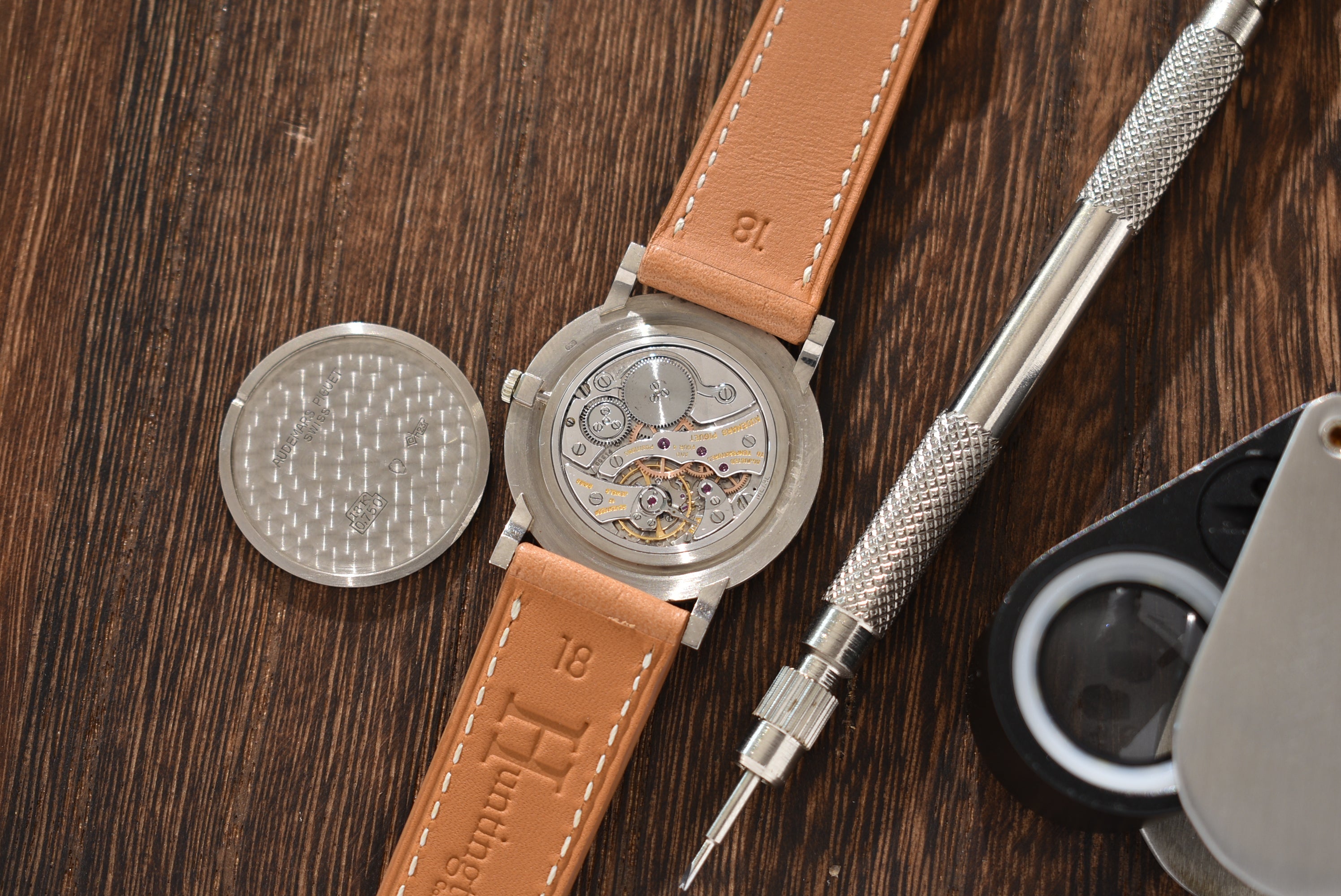
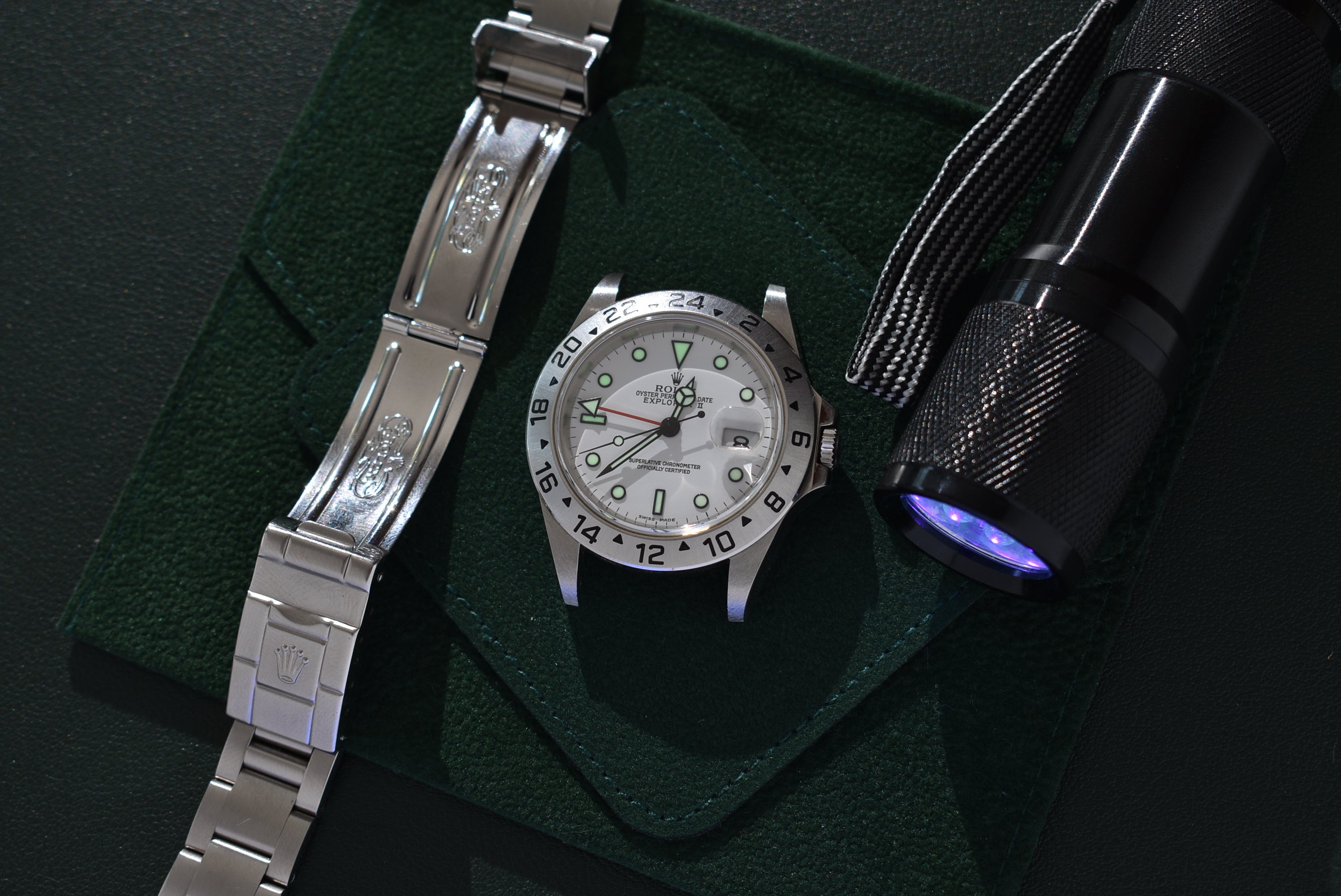
The Details
All our watches are scrutinized during inspection to make sure our descriptions are as accurate as possible.
- Recently viewed
Cart
No more products available for purchase
Your Cart is Empty
Pair with
- 166.0117
- Watch Only
- Specifications
- The Story
- The Brand
Year: 1972
Model: Geneve
Case Diameter: 34mm
Lug to Lug: 40mm
Case: Stainless Steel
Condition:
No significant wear as seen
Dial: Silver
Movement: Manual wind
Condition
One of the cleanest Omgas we have had in the shop. The case is unpolished with very light wear. The dial has no imperfection and is paired with very nice tritium lume. The original crystal is stamped with the Omega logo and has very minor wear.
In the early 1950s, Omega introduced the word 'Geneve' to their 30mm watches, marking a significant milestone in the 1953 Geneva Observatory trials by setting multiple records. However, the success of their Professional line in the late 1950s negatively impacted the marketing of the Geneve line, leading to a disparity in retail prices. Despite this, the Geneve-branded Omega watches held significant value for those who appreciate design and precision. These watches used the same movements as other Omega timepieces but were not designed for sea depths or space flights. The O.G. watches were usually pared-back, cleaner, and had more negative space on the dial. They can still be found under a grand and under $500, containing the same movements as their more famous watches. The Omega Geneve watches are cool and can be found in various styles, including 50s and 60s staidness, 70s funk, and 80s computer cool styles. The watch has a nickname, the Omega O.G., and there is no waitlist for one.
The reference 166.0117 is probably one of the best models from the Geneve line. A super sporty omega that is well-executed and very versatile. The example for sale is one of the cleanest ones we've seen with an amazing dial and creamy lume.
Omega, a Swiss watchmaker founded in 1848, has a rich history of innovation and precision. The company's vision was carried on by its sons Louis-Paul and César, who pioneered full watch production under the brand's roof. In 1894, the company unveiled the world's first mass-produced, interchangeable watch movement, the Omega Calibre, which streamlined production and propelled the brand to international fame.
As the 20th century began, Omega watches became at the forefront of timekeeping technology and revolutionized sports watches with their precision. The Olympic Games provided an ideal stage for Omega to demonstrate its exceptional timekeeping abilities. In 1932, Omega began its role as Official Olympic Timekeeper, starting an enduring partnership spanning over 80 years. With each Games, Omega introduced groundbreaking timekeeping innovations, such as the first photo finish camera at the 1948 London Olympics.
Omega's contributions to spaceflight began in 1962 when the Omega Speedmaster became the first watch worn in space on Mercury-Atlas 6. Its defining moment came in 1969 with the Apollo 11 moon landing, where Buzz Aldrin stepped onto the moon wearing his trusty Omega Speedmaster Moonwatch. The company played an indispensable role in NASA's pioneering '60s space missions, including the Apollo 13 mission, where the Speedmaster timed the engine burn, ensuring the crew's safe descent to Earth.
Omega's cultural impact extends into pop culture through a long-running cinematic partnership with James Bond Movies. Since 1995's GoldenEye, James Bond has sported Omega watches on the silver screen, wearing the Seamaster Diver 300M and the rugged Omega Seamaster Planet Ocean.
Omega remains dedicated to exploring new technological frontiers today, with innovations like the battery-free Pictograms model, wearable tech collaborations, and energy-harnessing movements driving progress and cementing its place in history.
